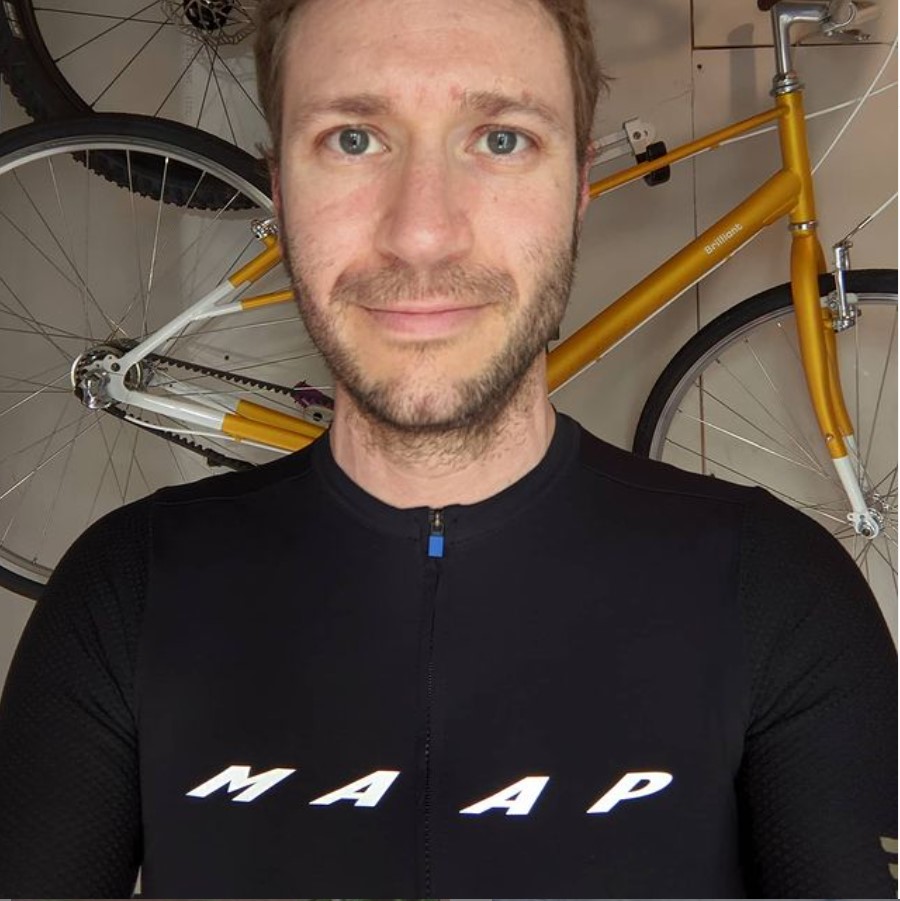Best bikepacking pedals: the perfect options for long days on a loaded bike
A roundup of the best bikepacking pedals for riding a loaded bike through the backcountry
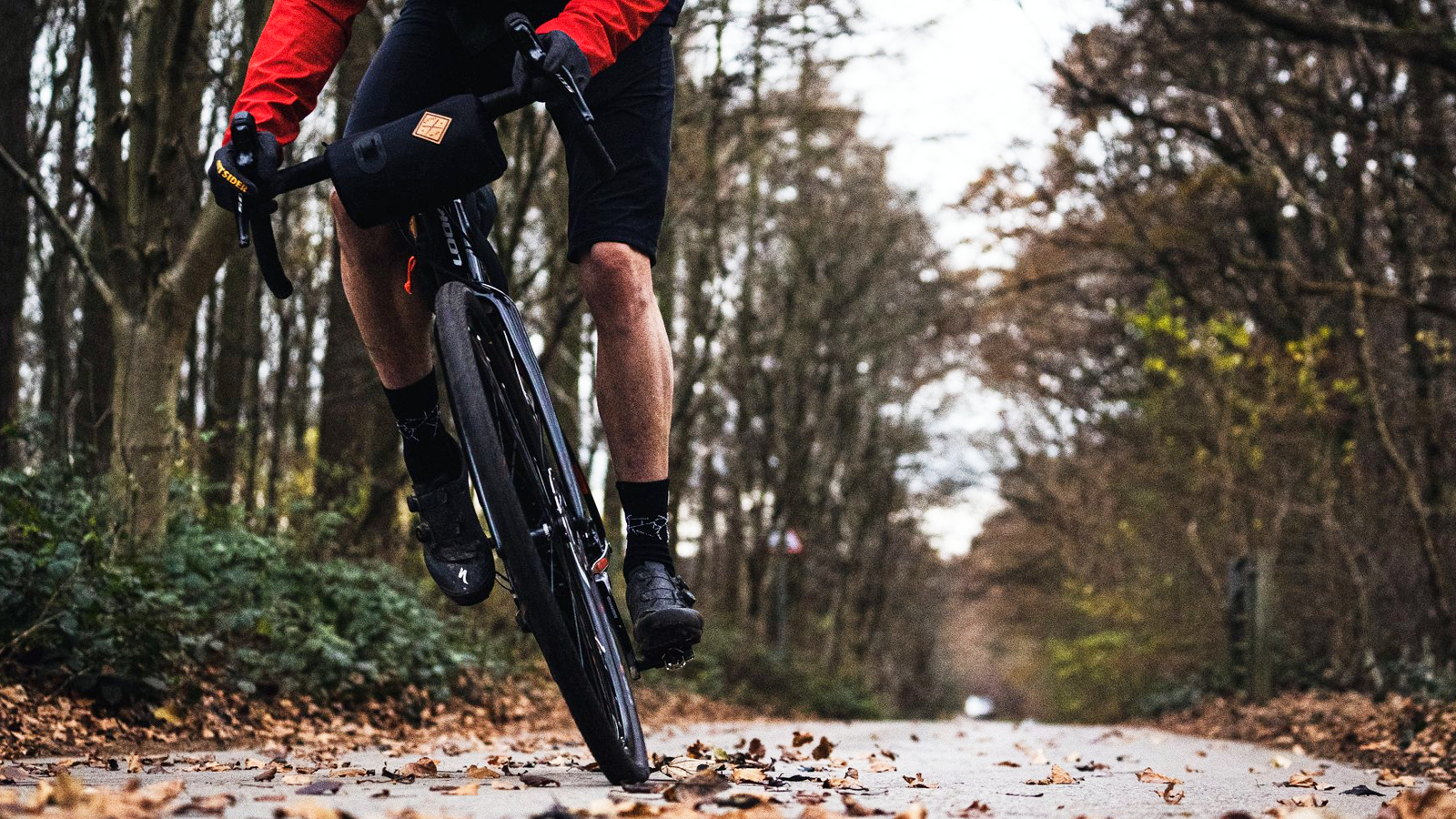
The best bikepacking pedals play an integral part in your loaded bike setup - probably more than you'd think.
A loaded bike on rugged terrain tends to mean lots of on- and off-the-bike moments - that's just the nature of bikepacking. It is also more prone to hitting the deck without much provocation, and being able to put a foot down to avoid a fall or crash is crucial.
In many ways, choosing the right bikepacking pedals for you is much the same as choosing the best mountain bike pedals. You need something that works with your shoe choices, whether that's going clipless or flat. Perhaps your bikepacking involves long days on gravel roads, and you need something more akin to a road shoe. Will you choose a pedal that lets you bring only one pair of shoes - or will you be bringing camp shoes? It all comes down to what bikepacking means to you.
Whatever you need in a pedal there are plenty of options out there. Your style of riding might require a supportive platform and a double-sided clipless system, or it might be the best MTB flat pedal that lets you dismount easily and start pushing the bike.
We've rounded up our best suggestions for whatever problem you need to solve. Keep reading for our recommendations or jump down for ideas of what to look for when shopping.
- What is bikepacking? The ultimate guide
- Best bikepacking bikes: our pick of adventure-ready rides
- Best bikepacking bags: carry your gear and supplies with ease
Best bikepacking pedals
Why trust BikePerfect
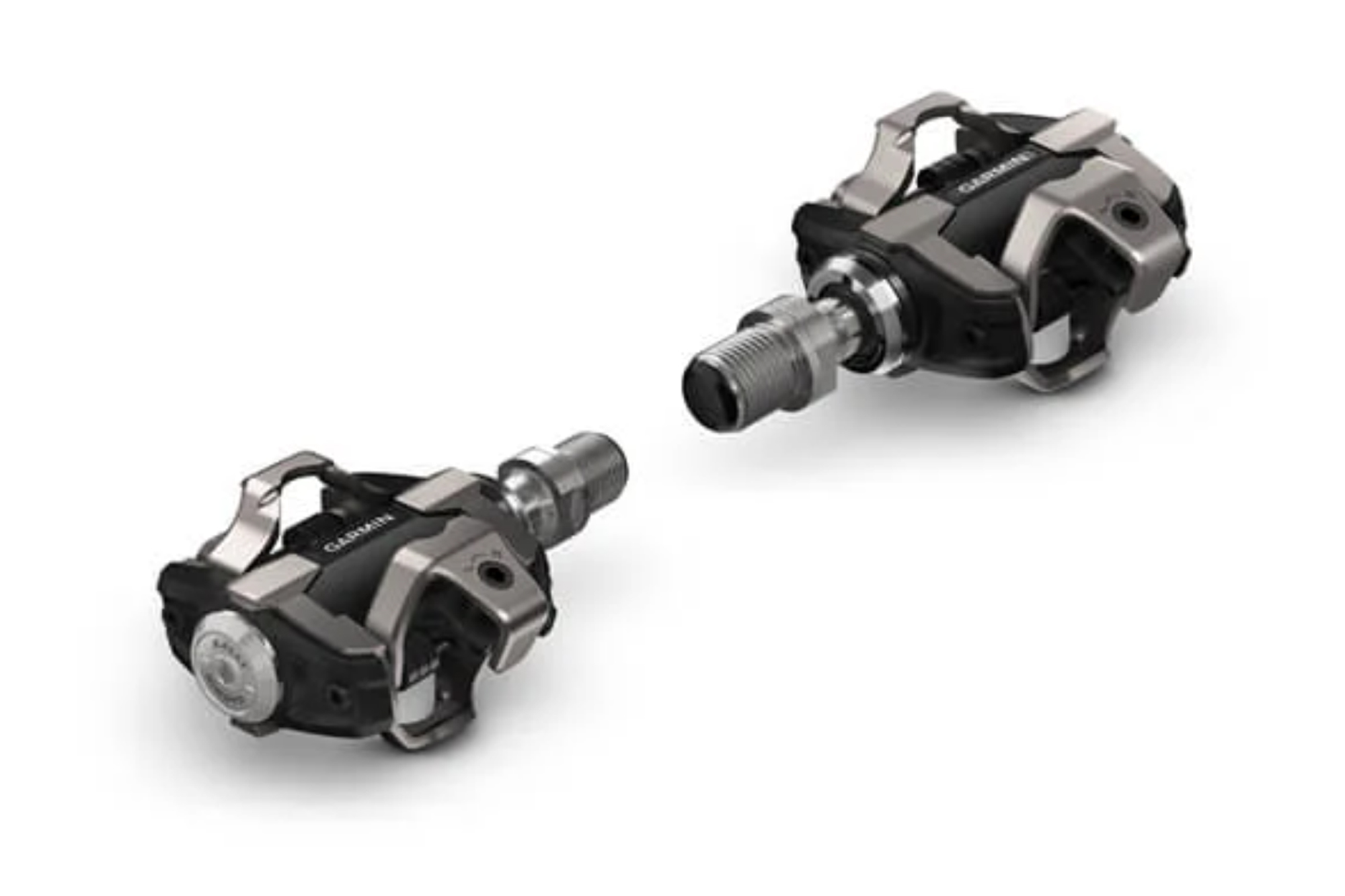
Garmin Rally XC200
Specifications
Reasons to buy
Reasons to avoid
Most of the time when people think about riding with power, it's often relegated to those who compete or race. There's no doubting that if you want to be a fast rider there's no better upgrade than opting for one of the best MTB power meters - but power can also help with pacing, not just performance.
Bikepacking isn't about all-out speed and pacing is vitally important. Adding a power meter to your bike can help you arrive at your destination feeling less drained.
When it comes to deciding how to add power, the Garmin Rally system is one of the most flexible options. Start with the single-sided option then upgrade to double later. Plus, if you want to use it for road cycling it's easy to convert to a three-bolt road cleat system.
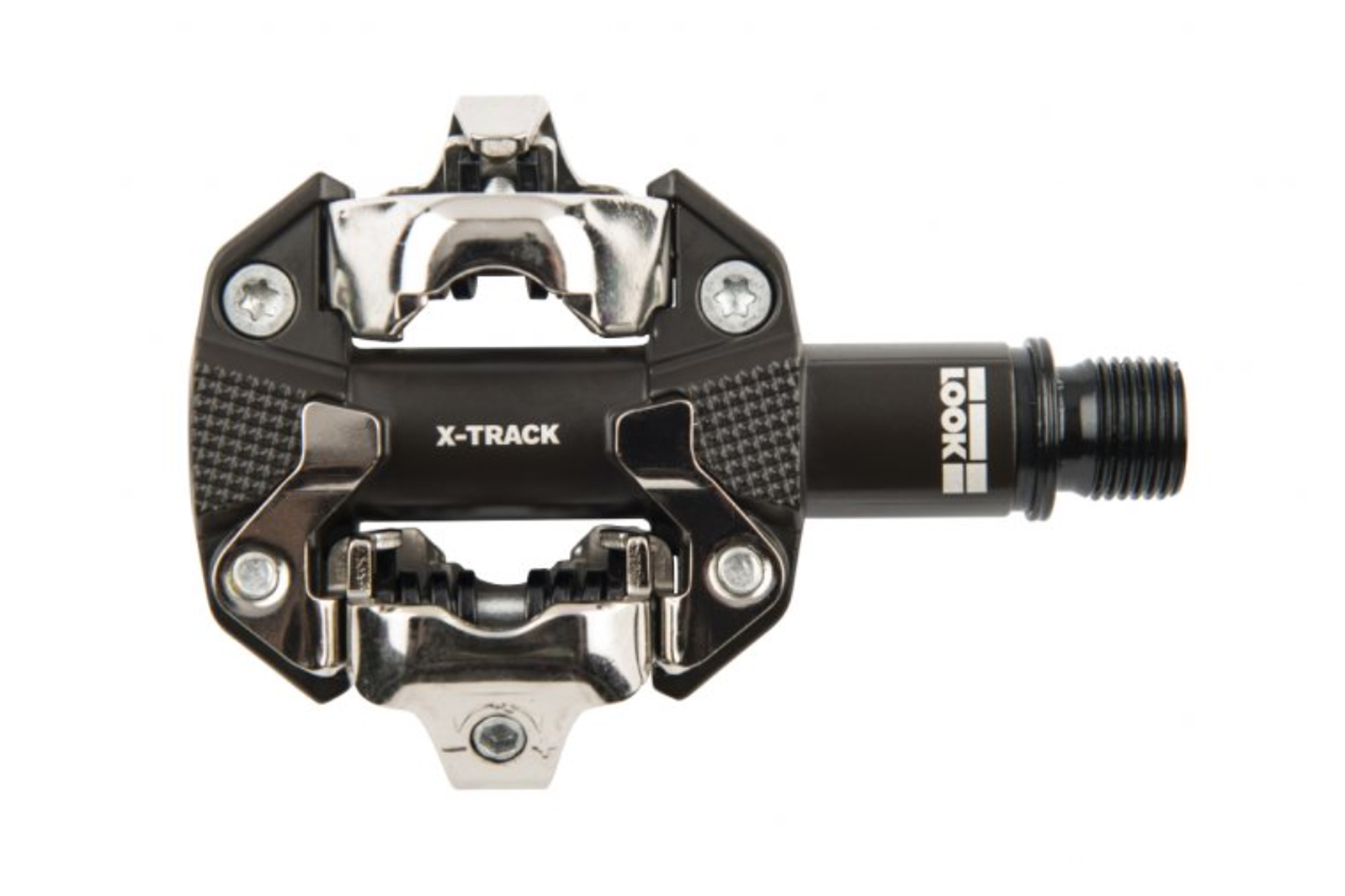
Look X-Track
Specifications
Reasons to buy
Reasons to avoid
Bikepacking likely involves long days in the saddle. You are going to want plenty of support for your foot even for clipless pedal designs. On the other hand, not everyone wants a super-specific pedal just for bikepacking. The Look X-Track pedals fall into this space perfectly.
If you've used a Shimano SPD pedal then the retention mechanism of the X-Track is exactly the same. What's different is the design around that mechanism. A wider platform makes for a more comfortable all-day design and the X-Track offers extra width. At the same time, it's still small enough to avoid rock strikes no matter how rowdy you want to get. This is a pedal that will serve you well on any off-road ride.
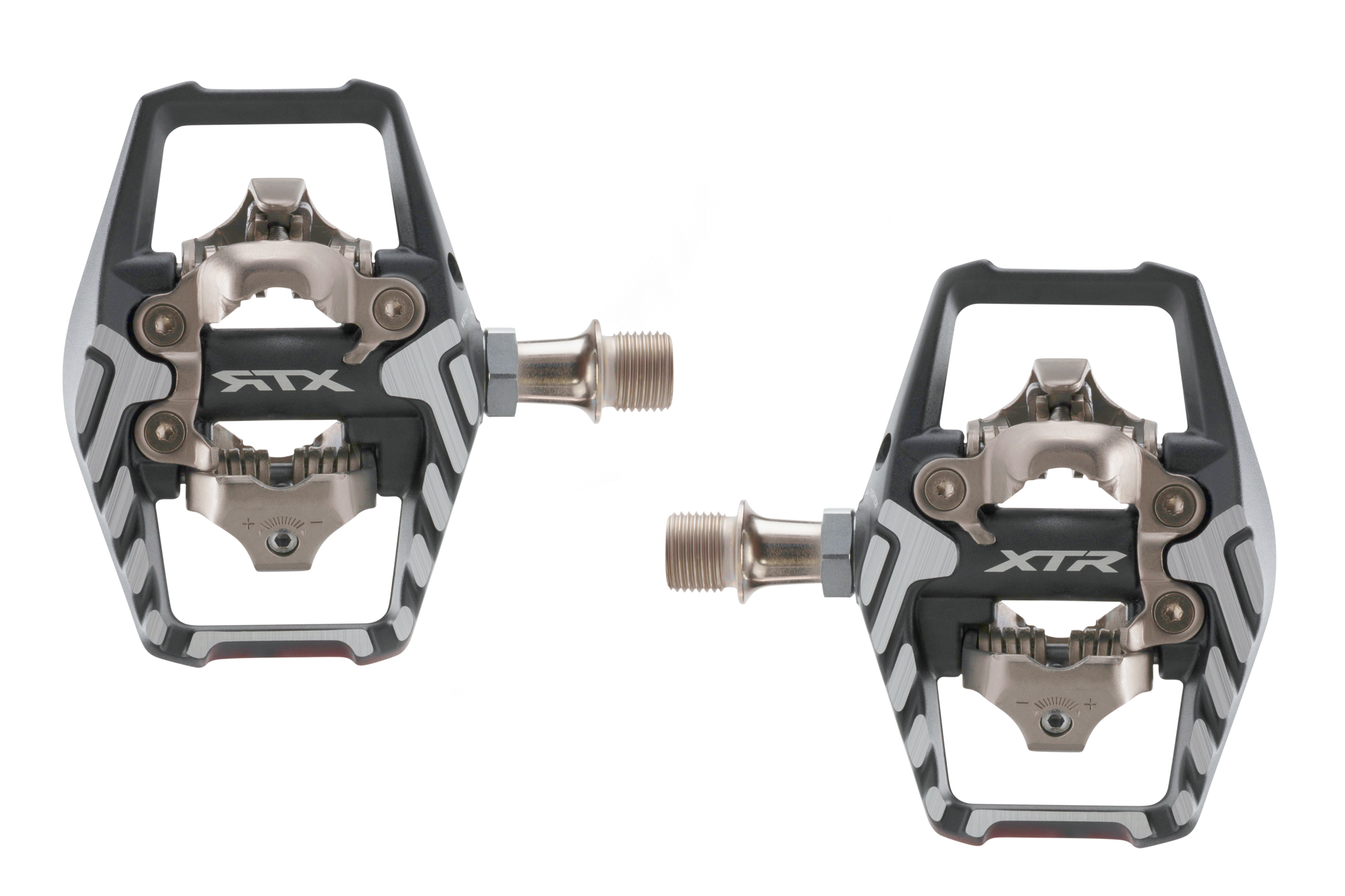
Shimano XTR PD-M9120
Specifications
Reasons to buy
Reasons to avoid
Pins or no pins; that is the question, especially on a clipless setup. Depending on the shoe-to-cleat interface, it could be a help or a hindrance. If you feel like you want a nice wide platform without pins then Shimano has an excellent option with the M9120 pedal.
The wide-open nature of the platform means better performance in the mud. There's support for your foot over a long day of riding and plenty of room to stomp down when you just need to get moving before clipping in. No pins might make for a slippery platform but it also means there's nothing to interfere with float or clipping in and out.
Understandably XTR may be beyond some riders' budgets, however, Shimano offers all its SPD pedal levels with an extended pedal body version.
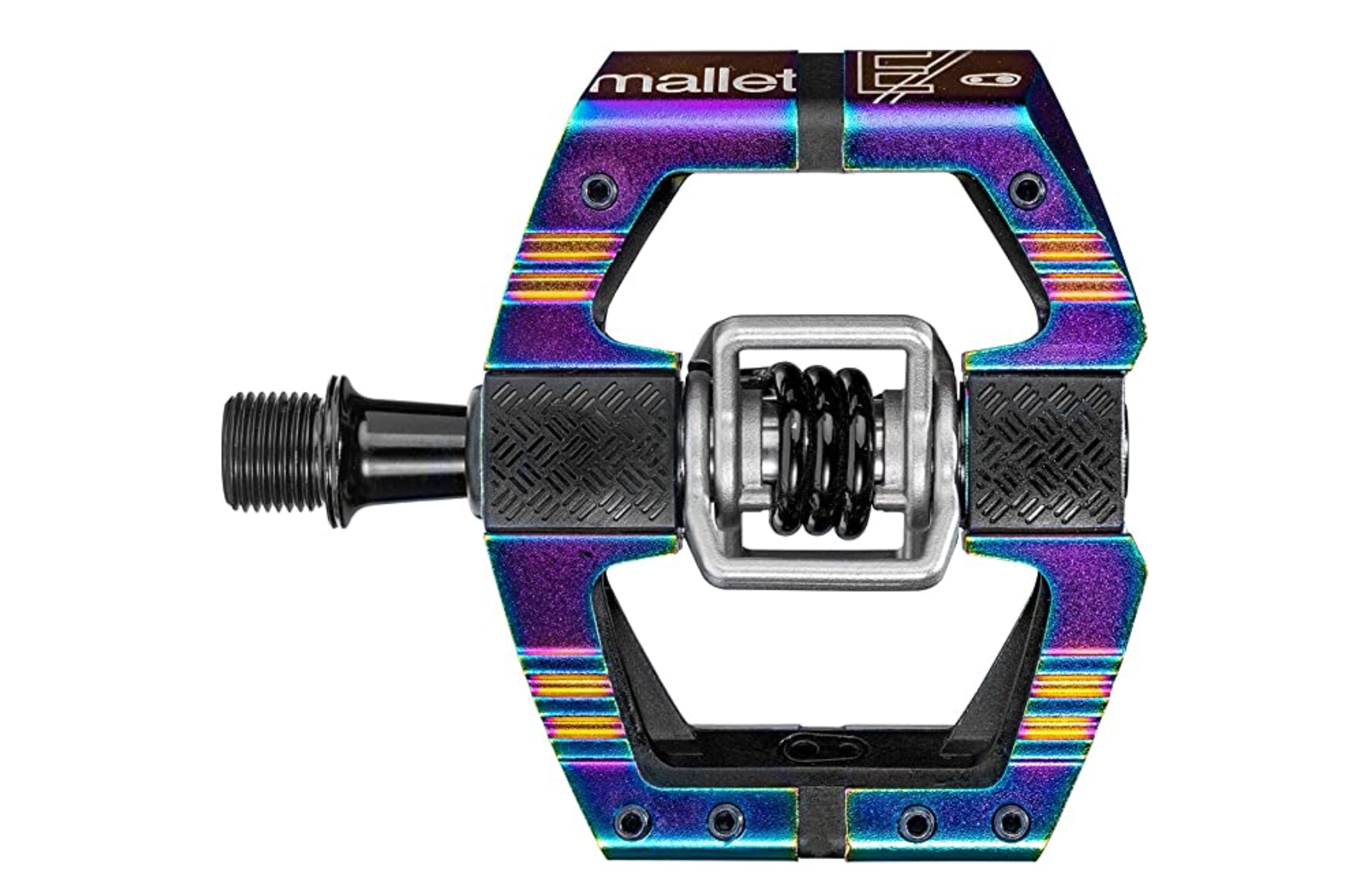
Crankbrothers Mallet E Limited Edition Oil Slick
Specifications
Reasons to buy
Reasons to avoid
The Crankbrothers eggbeater is a system with a well-earned reputation for mud-shedding and ease of entry, thanks to its minimal design. The Mallet range of pedals takes that same design and adds a wide platform around it.
The Mallet E has adjustable pins and replaceable plastic traction pads, a combination that allows you to perfectly tune the connection between your shoe and the pedal. Add to that four different cleat options for changing release angle and float, then on top of everything you can choose the LS (long spindle) or non-LS version to adjust stance width. Whatever your preference, there's an option to suit it.
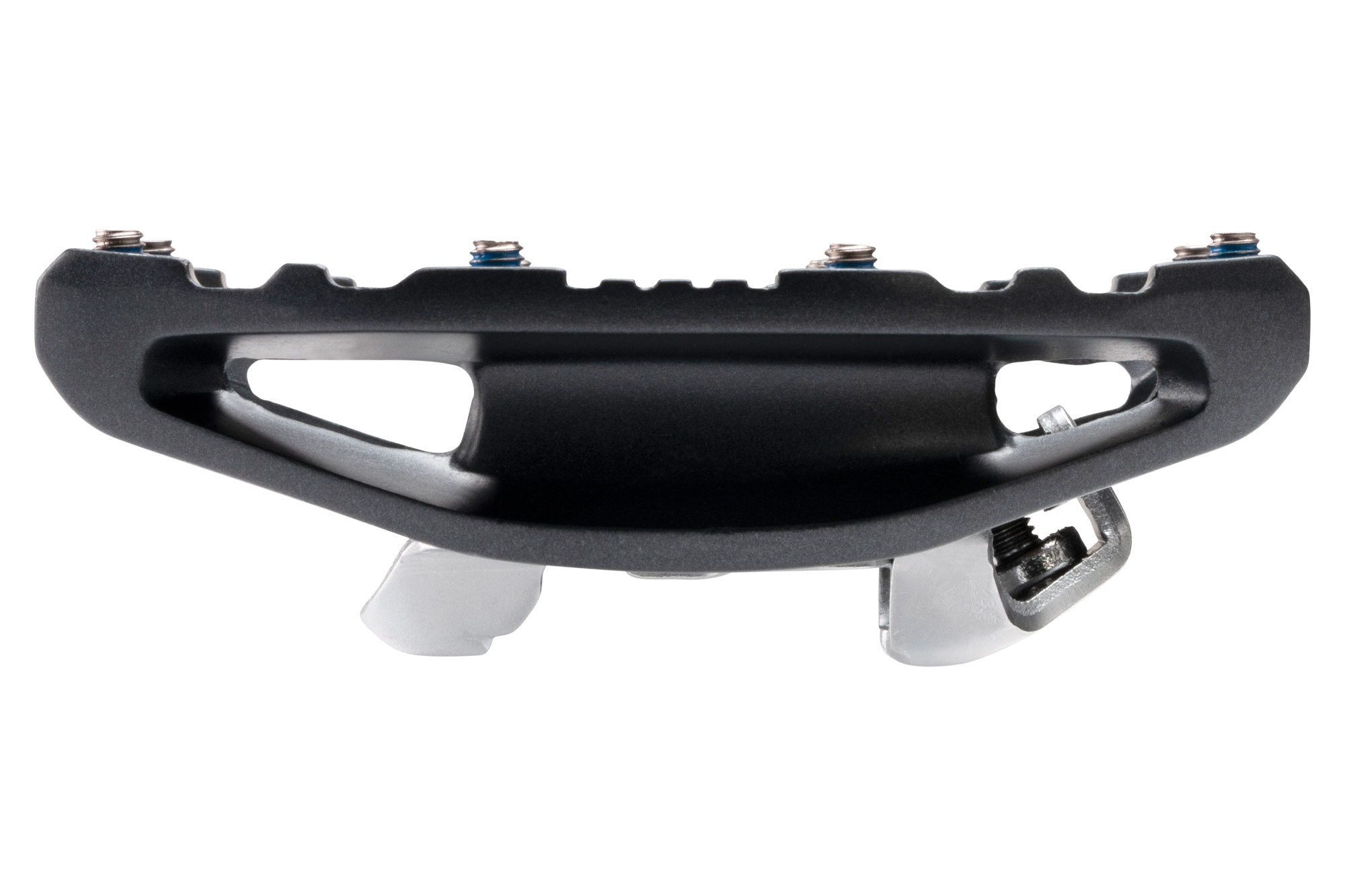
Shimano PD-EH500
Specifications
Reasons to buy
Reasons to avoid
The Shimano PD-EH500 is a pedal with two personalities that lets you clip in on one side and ride with flat shoes on the other.
During the day stay clipped in while you cover the long miles, then at night, you can change into your comfortable camp shoes and pedal just as well. They also use Shimano's Light Action SPD step-in for an easier clip-in action, perfect for riders who aren't as confident using clipless systems.
Traction pins on the flat side provide a more assured grip with your shoe when you aren't clipped in, and if you find the pins unnecessary, unscrewing them will make it comfortable enough to even wear flip-flops.
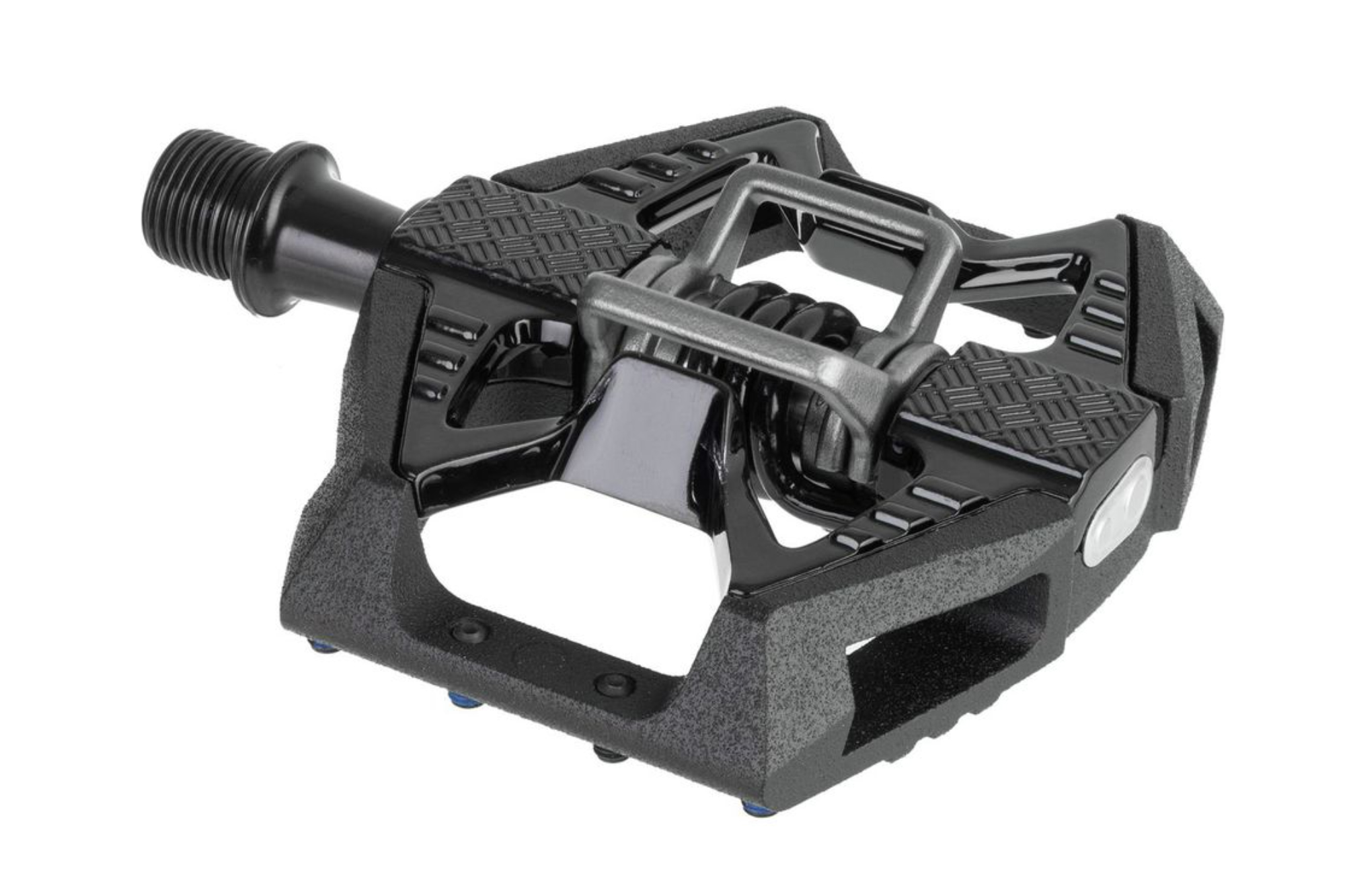
Crankbrothers Double Shot 3
Specifications
Reasons to buy
Reasons to avoid
For those who are using an eggbeater pedal with other bikes, the last thing you want is having to swap to a different cleat for your bikepacking setup. If you like the idea of easily switching to a camp shoe after a long day of riding but you want to stick with the eggbeater design, the Double Shot 3 is for you.
It features the same 57mm wide q-factor as the Mallet E LS and the Double Shot 3 adds adjustable pins on the flat side compared to the Double Shot 2. You also get more platform support on the clipless side compared to the double-sided Shimano EH500.
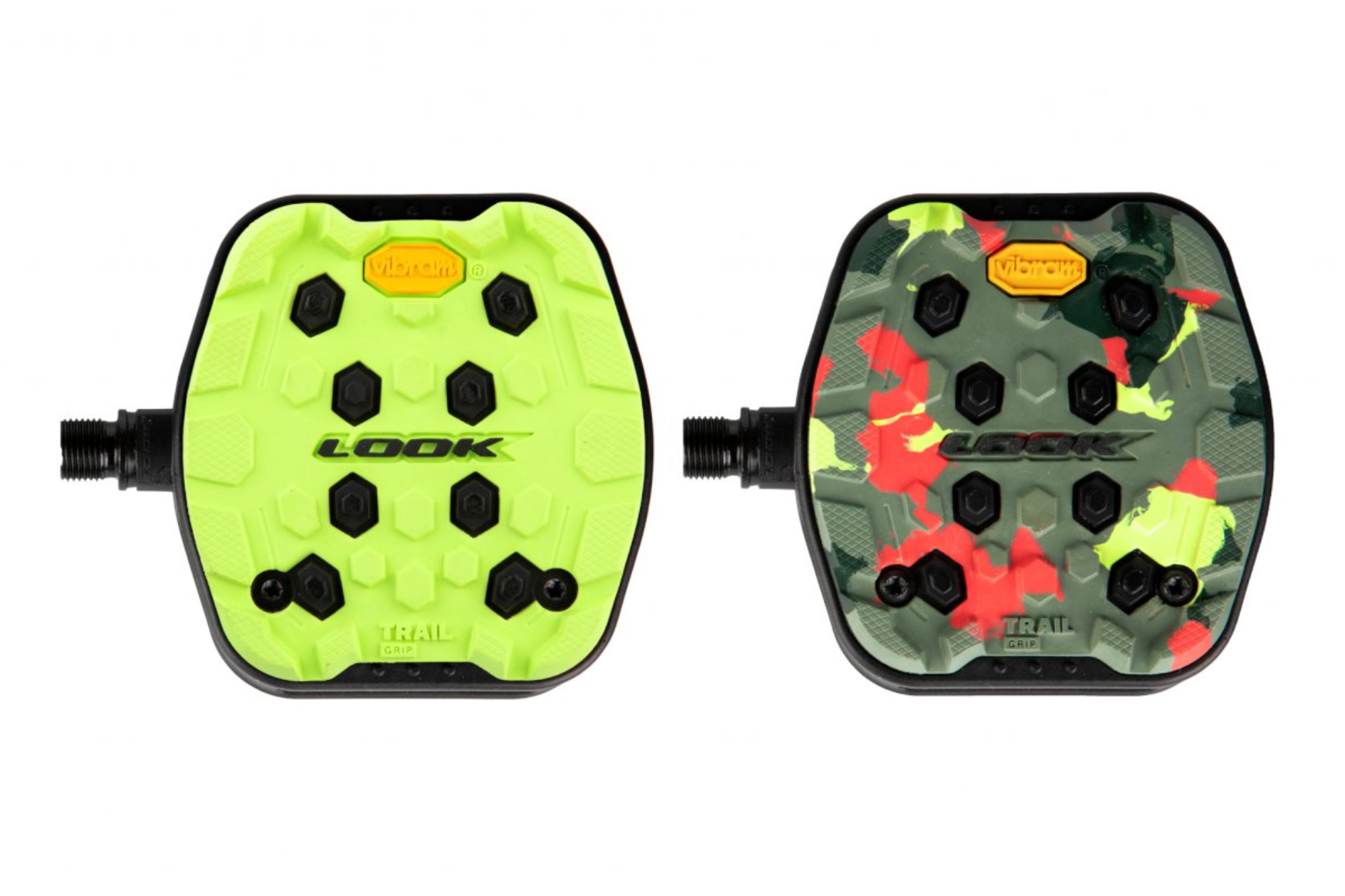
Look Trail Grip
Specifications
Reasons to buy
Reasons to avoid
Not everyone needs aggressive pins; they may offer grip but they can also shred shoes (and shins) over time. Look is an innovative brand when it comes to pedals, responsible for introducing the first clipless system back in 1984, and the Trail Grip pedals are as innovative as the Vibram lug tread they employ.
The Vibram company created the first rubber-lugged soles and it's built a reputation on traction, so it only seems natural for Look and Vibram to work together on a pedal design. The Trail Grip version of the Look flat pedals features a composite stud and rubber lug tread in the Vibram-designed cover. If you want to swap to a less aggressive cover it's an easy change, and they even come in different colors.

Fyxation Mesa MP Subzero
Specifications
Reasons to buy
Reasons to avoid
If your style of bikepacking is filled with short days underscored by rain and snow, Fyxation has your back. The design goes back to the standard Mesa MP which is a thin, 14 mm platform pedal with a nylon body and sealed bearings.
For the Subzero edition, Fyxation takes the replaceable pins and swaps them for a stainless version. It's already a great design but a small change means there's no need to worry about rusty pedal pieces. Fyxation does sell the pins if you want to use them on other pedals, but the Mesa MP is a well-designed, comfortable, and affordable flat pedal that's well worth grabbing.
- Best bikepacking handlebars: maximize comfort and handling for bikepacking
- Best bikepacking saddles: comfy saddles for multi-day adventures
What to look for when shopping for bikepacking pedals
1. Why are clipless pedals called clipless?
If you are new to pedals you might be very confused by the names. Pedals started out flat, a simple platform that the rider pushes down on to propel the bike forward. The next bit of technology in the progression was toe clips that used straps to hold the foot in place. For many years that was the best way to optimize power transfer for racing. Then in 1984 Look introduced a new system that drew on experience from ski bindings and it no longer required a toe clip, hence the 'clipless' moniker.
2. Clipless vs flat pedals
Now that you have an understanding of the technology we can dive deeper. In today's marketplace, there are two basic design styles. Clipless pedals require clipping into the pedal and they form a solid connection between the foot and the pedal. Flat pedals do not have a way to attach the foot to the pedal and they work because of friction between the pedal and the shoe, usually aided with metal pins in the pedal body.
The question of which to choose is age-old. There are significant forces on either side and which system to choose is somewhat up in the air. Traditionally the idea is that a more rounded pedal stroke recruits leg muscles for both the downstroke and the upstroke. Therefore more power in more phases of the pedal stroke creates efficiency.
There are other benefits to having your foot attached to the pedals though. Even if you aren't creating more power on the upstroke the connection makes for the same connection to the pedal all the time. You can also use the cleat location to promote better bike balance.
Alternatively, there are advantages to flat pedals. Without special shoes needed you can choose the shoe that's right for your needs without worrying about attaching a cleat. If you need to put a foot down to balance or save yourself from falling, it's easy to do. Bikepacking can also involve a hike-a-bike or walking element as well, an area where flat-soled shoes often excel.
There's also another option. Dual-sided pedals allow for clipping in on one side and riding a flat pedal on the other side. It can be the best of both worlds if you don't mind checking which side the pedal is on (and once you're used to it, it doesn't actually require much checking).
There's no need to solve the equation and declare one solution the winner. What's important to understand is that it's less clear than some may think and the choice of footwear is dictated far more by the terrain and rider's preference. If you like flat pedals, go ahead and use them. If you'd rather use clipless pedals, that's a great option as well.
- Ultimate bikepacking setup: Our perfect bikepacking kit list
- Bikepacking essentials: Our tips to get ready for a bikepacking adventure
3. Don’t forget the shoes
Choose flat, clipless, or a combination pedal without worrying about anything more than what you like. Whatever you choose though, understand that it's impossible to talk about the pedal without considering the shoe. Clipless pedals require a compatible shoe. Flat pedals let you choose any shoe you want but they still rely on the shoe to work. A flat pedal with an overly flexible sole makes for a sore foot. A flat pedal without a grippy sole might make for a lot of slipping. There are tons of options for whatever you need and we have guides to help you choose. Consider the shoes and pedals as a system that will work best together. Check out our guides below for more information about finding the best shoes.
- Best mountain bike shoes
- Best women’s mountain bike shoes
- The best MTB flat pedal shoes
- Best gravel shoes
- Best winter MTB boots
Josh Ross was our US tech writer. He's most happy when talking about the finer details of how bicycle parts and components work, and enjoys putting his thoughts to words. He is a road cyclist at heart but can often be found taking the gravel road less traveled. Although he rarely races these days, he still enjoys a good Zwift session and race but will always choose the real world over pixels.
Height: 5'9"
Weight: 137 lb.
